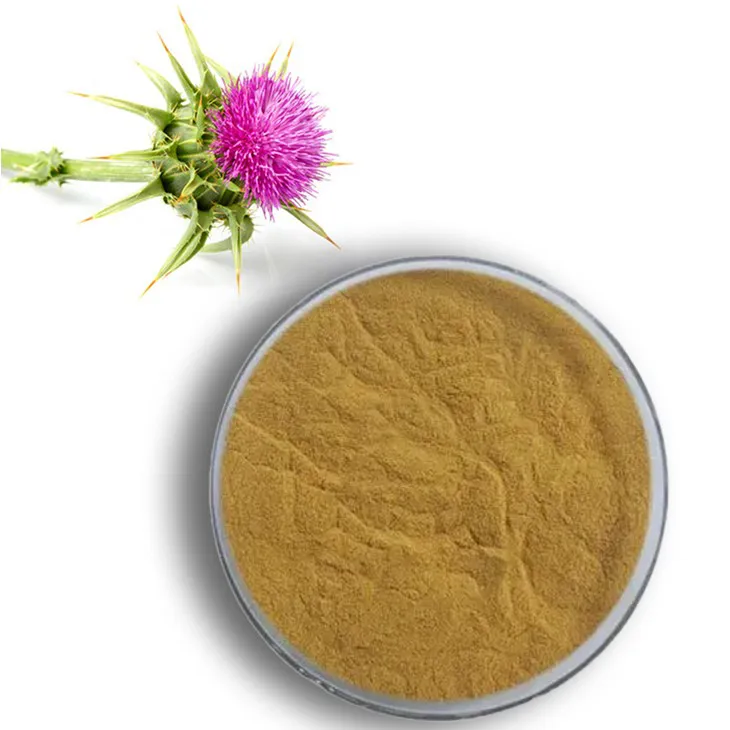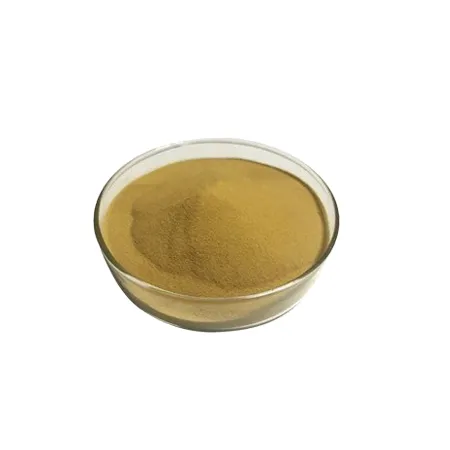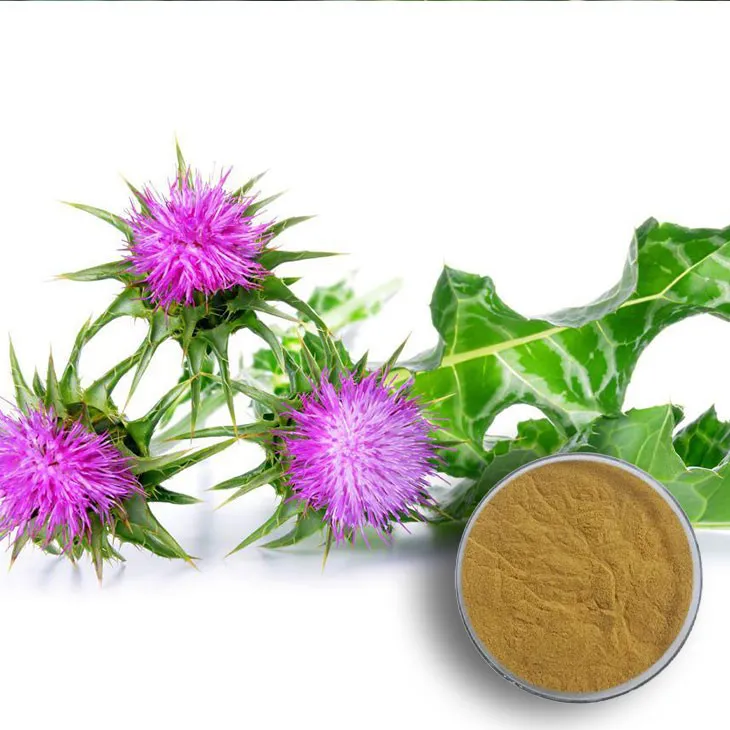- 0086-571-85302990
- sales@greenskybio.com
Can milk thistle extract reduce cholesterol?
2024-11-12

1. Introduction
Cholesterol is a crucial lipid molecule in the human body, playing essential roles in cell membrane structure, hormone synthesis, and other physiological processes. However, elevated levels of cholesterol, particularly low - density lipoprotein cholesterol (LDL - C), are associated with an increased risk of cardiovascular diseases. As a result, finding natural and effective ways to manage cholesterol levels has become an area of significant research interest. Milk thistle (Silybum marianum), a plant with a long history of medicinal use, has attracted attention for its potential cholesterol - lowering properties. The extract of milk thistle, rich in various bioactive compounds, may offer a novel approach to cholesterol management.

2. Historical Use of Milk Thistle
Milk thistle has a long - standing history in traditional medicine. It was used in ancient Greek and Roman medicine to treat liver and gallbladder disorders. The plant was believed to have hepatoprotective properties, which may be related to its potential effects on cholesterol metabolism. Historically, the use of milk thistle was mainly based on empirical knowledge and observations. For example, herbalists noted that patients with liver problems, which are often associated with abnormal lipid metabolism, seemed to benefit from milk thistle - based remedies. However, the understanding of its precise mechanisms of action was limited in the past.

3. Bioactive Compounds in Milk Thistle Extract
The main bioactive compounds in Milk Thistle Extract are silymarin and its related flavonolignans. Silymarin is a complex mixture consisting of silybin, isosilybin, silydianin, and silychristin. These compounds are responsible for many of the observed biological effects of Milk Thistle Extract.
3.1 Antioxidant Properties
One of the key features of silymarin is its strong antioxidant activity. Antioxidants play a vital role in protecting cells from oxidative damage. In the context of cholesterol metabolism, oxidative stress can disrupt the normal function of cells involved in lipid regulation. For example, oxidative stress can damage the endothelial cells lining the blood vessels, which in turn can affect the uptake and metabolism of cholesterol. By scavenging free radicals and reducing oxidative stress, silymarin in milk thistle extract may help maintain the integrity of these cells and support normal cholesterol - handling processes.
3.2 Interaction with Lipid - related Receptors
Research has also suggested that milk thistle extract may interact with receptors in the body that are involved in lipid metabolism. For instance, it may modulate the activity of peroxisome proliferator - activated receptors (PPARs). PPARs play a crucial role in regulating genes related to lipid and glucose metabolism. By interacting with these receptors, milk thistle extract may influence the expression of genes involved in cholesterol synthesis, transport, and clearance. Additionally, it may also affect the function of liver X receptors (LXRs), which are important in cholesterol homeostasis.

4. Modern Research on Milk Thistle Extract and Cholesterol Reduction
4.1 In vitro Studies
Several in vitro studies have been conducted to explore the potential of milk thistle extract in reducing cholesterol. In cell culture models, milk thistle extract has been shown to decrease the synthesis of cholesterol in liver cells. This effect may be mediated through the inhibition of key enzymes involved in cholesterol biosynthesis, such as 3 - hydroxy - 3 - methylglutaryl - coenzyme A (HMG - CoA) reductase. In addition, the extract has been found to enhance the uptake of LDL - C by cells, which could contribute to the reduction of circulating LDL - C levels.
4.2 Animal Studies
Animal studies have provided further evidence for the cholesterol - lowering potential of milk thistle extract. In rodent models of hypercholesterolemia, supplementation with milk thistle extract has led to a significant decrease in plasma cholesterol levels. The extract has been shown to affect both the synthesis and clearance of cholesterol in the liver. For example, it may increase the expression of genes involved in cholesterol export from the liver, such as ATP - binding cassette transporter A1 (ABCA1). Moreover, milk thistle extract has been demonstrated to reduce the formation of atherosclerotic plaques in animal models, which is closely related to its cholesterol - lowering effect.
4.3 Human Studies
Although the results of human studies on milk thistle extract and cholesterol reduction are somewhat inconsistent, some positive findings have been reported. In some small - scale clinical trials, participants who took milk thistle extract supplements showed a modest decrease in LDL - C levels over a certain period. However, other studies have not observed significant changes in cholesterol levels. The variability in results may be due to several factors, such as differences in study design, the dosage and form of milk thistle extract used, and the characteristics of the study participants.
5. Factors Affecting the Efficacy of Milk Thistle Extract in Cholesterol Reduction
5.1 Dosage
The dosage of milk thistle extract may play a crucial role in its cholesterol - lowering efficacy. In some studies, higher dosages of the extract seemed to show more pronounced effects on cholesterol levels. However, it is important to note that very high dosages may also carry potential risks, such as adverse effects on liver function. Therefore, finding the optimal dosage range is essential for maximizing the benefits while minimizing the risks.
5.2 Duration of Treatment
The length of time for which milk thistle extract is taken may also impact its effectiveness in reducing cholesterol. Longer - term treatment may be required to observe significant and sustained changes in cholesterol levels. Some studies have suggested that continuous supplementation for several weeks or months may be necessary to achieve optimal results.
5.3 Combination with Other Therapies
Milk thistle extract may interact with other medications or therapies used for cholesterol management. For example, it may have additive or synergistic effects when combined with statins, the most commonly used drugs for lowering cholesterol. However, it is also important to consider potential drug - drug interactions. Some components in milk thistle extract may interfere with the metabolism of certain medications, so caution should be exercised when using milk thistle extract in combination with other drugs.
6. Future Prospects
6.1 Further Research
Despite the existing research on milk thistle extract and cholesterol reduction, there is still much to be explored. Future studies should aim to clarify the precise mechanisms of action underlying its cholesterol - lowering effects. This may involve in - depth investigations at the molecular and cellular levels, such as studying the interaction of silymarin with specific proteins and genes involved in cholesterol metabolism. Additionally, larger - scale and more rigorously designed human trials are needed to better assess the efficacy and safety of milk thistle extract in reducing cholesterol.
6.2 Development of Novel Formulations
The development of novel formulations of milk thistle extract could enhance its bioavailability and effectiveness in reducing cholesterol. For example, encapsulating the extract in nanoparticles or liposomes may improve its absorption and delivery to target cells. This could potentially lead to more consistent and significant cholesterol - lowering effects.
6.3 Integration into Holistic Health Approaches
Milk thistle extract could be integrated into holistic health approaches for cholesterol management. Alongside dietary modifications and exercise, it may offer an additional natural option for individuals looking to maintain healthy cholesterol levels. However, more research is needed to determine the optimal combination of these approaches and to educate the public about the potential benefits and limitations of milk thistle extract in the context of overall health.
7. Conclusion
In conclusion, milk thistle extract shows potential in reducing cholesterol based on its antioxidant properties, interaction with lipid - related receptors, and the results of in vitro, animal, and some human studies. However, more research is needed to fully understand its mechanisms of action, optimize its use in terms of dosage and duration, and assess its safety and efficacy in different populations. With further investigation, milk thistle extract may become a valuable addition to the arsenal of natural products for cholesterol management.
FAQ:
1. What is milk thistle extract?
Milk thistle extract is derived from the milk thistle plant (Silybum marianum). It is rich in antioxidants, particularly silymarin, which is a complex of flavonolignans. These components are thought to have various health - promoting properties.
2. How does milk thistle extract potentially reduce cholesterol?
As mentioned, the antioxidants in milk thistle extract may protect cells involved in cholesterol regulation from oxidative stress. Oxidative stress can disrupt normal cellular functions related to cholesterol management. Also, it may interact with receptors in the body associated with lipid metabolism, which could influence how the body processes and regulates cholesterol levels.
3. Are there any historical uses of milk thistle extract related to cholesterol?
Historically, milk thistle has been used in traditional medicine for various liver - related ailments. While not directly related to cholesterol in all historical uses, the liver plays a crucial role in cholesterol metabolism. So, its historical use in promoting liver health might be indirectly related to potential effects on cholesterol.
4. What does modern research say about milk thistle extract and cholesterol?
Modern research has yielded mixed results. Some studies suggest that milk thistle extract may have a positive impact on cholesterol levels, particularly in reducing LDL (low - density lipoprotein) cholesterol, often referred to as bad" cholesterol. However, other studies have not found significant effects. More research is needed to fully understand its role in cholesterol reduction.
5. What are the future prospects for milk thistle extract in cholesterol reduction?
The future prospects are promising. As research continues to explore the mechanisms by which milk thistle extract may interact with the body's systems related to cholesterol, there is potential for the development of more targeted and effective treatments. Additionally, further research may help to clarify the optimal dosage and formulation for cholesterol - lowering effects.
Related literature
- "The Effects of Milk Thistle Extract on Cholesterol Levels: A Systematic Review"
- "Milk Thistle and Lipid Metabolism: Current Understanding and Future Directions"
- "Antioxidant Properties of Milk Thistle Extract and Their Implications for Cholesterol Regulation"
- ▶ Hesperidin
- ▶ citrus bioflavonoids
- ▶ plant extract
- ▶ lycopene
- ▶ Diosmin
- ▶ Grape seed extract
- ▶ Sea buckthorn Juice Powder
- ▶ Beetroot powder
- ▶ Hops Extract
- ▶ Artichoke Extract
- ▶ Reishi mushroom extract
- ▶ Astaxanthin
- ▶ Green Tea Extract
- ▶ Curcumin Extract
- ▶ Horse Chestnut Extract
- ▶ Other Problems
- ▶ Boswellia Serrata Extract
- ▶ Resveratrol Extract
- ▶ Marigold Extract
- ▶ Grape Leaf Extract
- ▶ blog3
- ▶ blog4
- ▶ blog5
-
Organic Tongkat Ali extract powder factory.
2024-11-12
-
How to make powder with ashwagandha extract.
2024-11-12
-
Rosehip extract manufacturers from China.
2024-11-12
-
The best cat's claw extract in nature.
2024-11-12
-
Chinese Dandelion Leaf Extract Suppliers.
2024-11-12
-
Elderberry Extract
2024-11-12
-
Troxerutin
2024-11-12
-
White Peony Extract
2024-11-12
-
White mustard seed extract
2024-11-12
-
Giant Knotweed Extract
2024-11-12
-
Boswellia Serrata Extract
2024-11-12
-
Epimedium extract powder
2024-11-12
-
Lily extract
2024-11-12
-
Pine bark Extract Powder
2024-11-12
-
Jujube Extract
2024-11-12





















